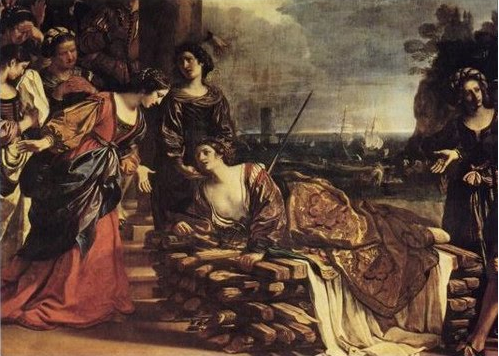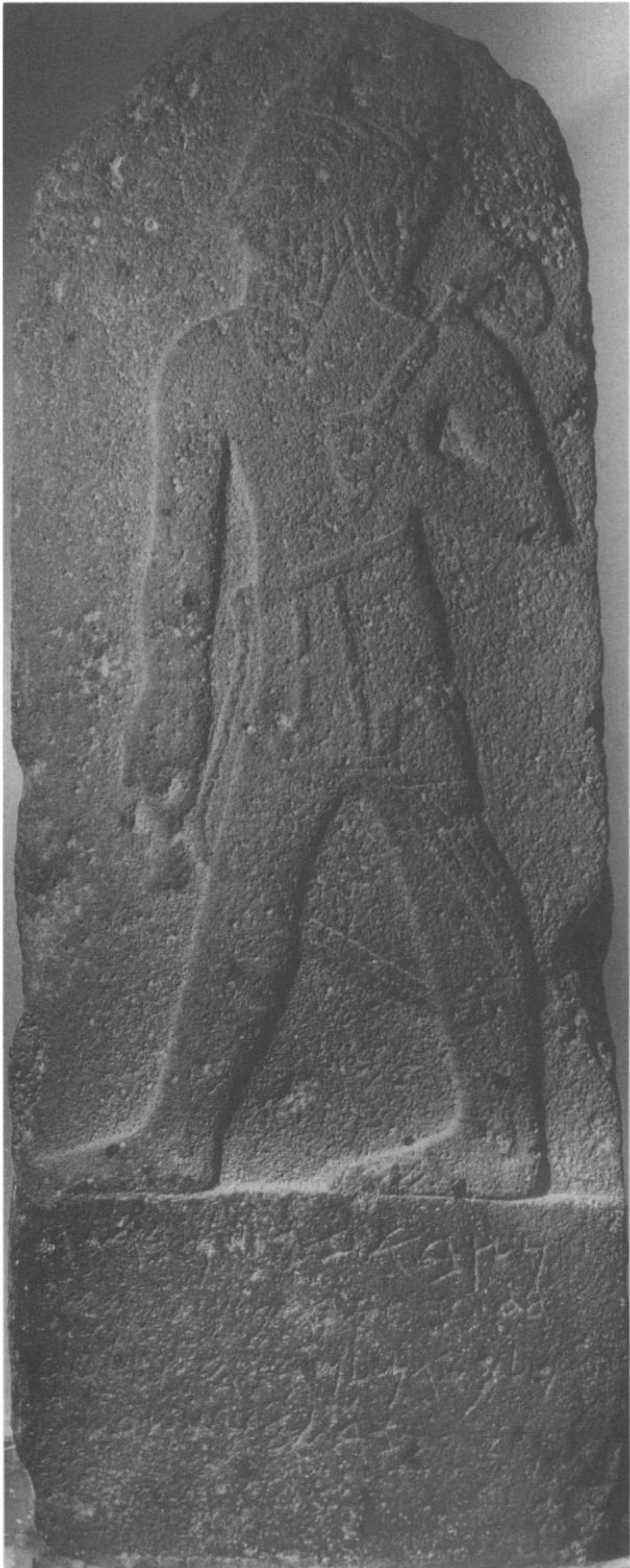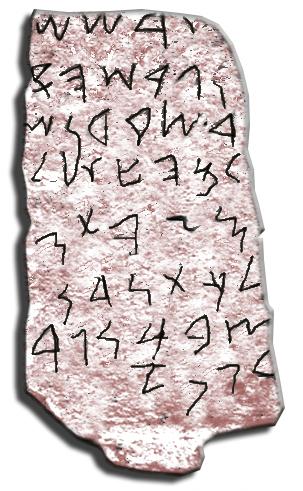|
Belus II
Belus was a legendary king of Tyre in Virgil's ''Aeneid'' and other Latin works. He was said to have been the father of Dido of Carthage, Pygmalion of Tyre, and Anna.Virgil. ''Aeneid'' Book 1, Line 729. The historical father of these figures was the king Mattan I, also known as (, 'Gift of the Lord'), which classicist T. T. Duke suggests was made into the name Belus as a hypocorism A hypocorism ( or ; from Ancient Greek: (), from (), 'to call by pet names', sometimes also ''hypocoristic'') or pet name is a name used to show affection for a person. It may be a diminutive form of a person's name, such as ''Izzy'' for I .... See also * Other people and places named Belus * King of Tyre, list of historical kings of Tyre * Melqart, Baal of Tyre References 820s BC deaths Phoenician characters in the Aeneid Year of birth unknown {{roman-stub ... [...More Info...] [...Related Items...] OR: [Wikipedia] [Google] [Baidu] |
Tyre (Lebanon)
Tyre (; ar, صور, translit=Ṣūr; phn, 𐤑𐤓, translit=Ṣūr, Greek ''Tyros'', Τύρος) is a city in Lebanon, one of the oldest continually inhabited cities in the world, though in medieval times for some centuries by just a tiny population. It was one of the earliest Phoenician metropolises and the legendary birthplace of Europa, her brothers Cadmus and Phoenix, as well as Carthage's founder Dido (Elissa). The city has many ancient sites, including the Tyre Hippodrome, and was added as a whole to UNESCO's list of World Heritage Sites in 1984. The historian Ernest Renan noted that "One can call Tyre a city of ruins, built out of ruins". Today Tyre is the fourth largest city in Lebanon after Beirut, Tripoli, and Sidon. It is the capital of the Tyre District in the South Governorate. There were approximately 200,000 inhabitants in the Tyre urban area in 2016, including many refugees, as the city hosts three of the twelve Palestinian refugee camps in Lebanon: Bu ... [...More Info...] [...Related Items...] OR: [Wikipedia] [Google] [Baidu] |
Anna Perenna
Anna Perenna was an old Roman deity of the circle or "ring" of the year, as indicated by the name (''per annum''). Festival Anna Perenna's festival fell on the Ides of March (March 15), which would have marked the first full moon in the year in the old lunar Roman calendar when March was reckoned as the first month of the year, and was held at the goddess' grove at the first milestone on the Via Flaminia. It was much frequented by the city '' plebs''. Macrobius records that offerings were made to her ''ut annare perannareque commode liceat'', i.e., "that the circle of the year may be completed happily" and that people sacrificed to her both publicly and privately. Johannes Lydus says that public sacrifice and prayers were offered to her to secure a healthy year. Ovid in his '' Fasti'' (3.523) provides a vivid description of her outdoor festival: Origin Ovid reports a legend that identifies Anna Perenna with the sister of Dido, the Carthaginian founder in Virgil's ''Aeneid''.O ... [...More Info...] [...Related Items...] OR: [Wikipedia] [Google] [Baidu] |
820s BC Deaths
8 (eight) is the natural number following 7 and preceding 9. In mathematics 8 is: * a composite number, its proper divisors being , , and . It is twice 4 or four times 2. * a power of two, being 2 (two cubed), and is the first number of the form , being an integer greater than 1. * the first number which is neither prime nor semiprime. * the base of the octal number system, which is mostly used with computers. In octal, one digit represents three bits. In modern computers, a byte is a grouping of eight bits, also called an octet. * a Fibonacci number, being plus . The next Fibonacci number is . 8 is the only positive Fibonacci number, aside from 1, that is a perfect cube. * the only nonzero perfect power that is one less than another perfect power, by Mihăilescu's Theorem. * the order of the smallest non-abelian group all of whose subgroups are normal. * the dimension of the octonions and is the highest possible dimension of a normed division algebra. * the first num ... [...More Info...] [...Related Items...] OR: [Wikipedia] [Google] [Baidu] |
Melqart
Melqart (also Melkarth or Melicarthus) was the tutelary god of the Phoenician city-state of Tyre and a major deity in the Phoenician and Punic pantheons. Often titled the "Lord of Tyre" (''Ba‘al Ṣūr''), he was also known as the Son of Baal or El (the Ruler of the Universe), King of the Underworld, and Protector of the Universe. He symbolized the annual cycle of vegetation and was associated with the Phoenician maternal goddess Astarte. Melqart was typically depicted as a bearded figure, dressed only in a rounded hat and loincloth. Reflecting his dual role as both protector of the world and ruler of the underworld, he was often shown holding an Egyptian ankh or lotus flower as a symbol of life and a fenestrated axe as a symbol of death. As Tyrian trade and settlement expanded, Melqart became venerated in Phoenician and Punic cultures across the Mediterranean, especially its colonies of Carthage and Cadiz. During the high point of Phoenician civilization between 100 ... [...More Info...] [...Related Items...] OR: [Wikipedia] [Google] [Baidu] |
King Of Tyre
The King of Tyre was the ruler of Tyre, the ancient Phoenician city in what is now Lebanon. The traditional list of 12 kings, with reigns dated to 990–785 BC, is derived from the lost history of Menander of Ephesus as quoted by Josephus in ''Against Apion'' I. 116–127. Josephus asserts that Menander had drawn his list from the chronicles of Tyre itself. Menander-Josephus also contains a list of 9 kings and judges, with reigns dated to 591–532 BC in Against Apion I. 154–160. Ancient Tyrian rulers based on Hellenic mythology Late Bronze Age rulers Kings of the Sidonians (with Tyre as capital), 990–785 BC The dates for the reconstruction of Menander's Tyrian king list from Abibaal through Pygmalion are established in three places by three independent sources: a Biblical synchronism (Hiram's assistance to Solomon in building the Temple, from 967 BC onwards), an Assyrian record (tribute of Baal-Eser II/Balazeros II to Shalmaneser III in 841 BC), and a Roman historian ... [...More Info...] [...Related Items...] OR: [Wikipedia] [Google] [Baidu] |
Belus (other)
Belus (Latin) or Belos ( grc-gre, Βῆλος, ''Bē̂los'') was the indifferent classical rendering of the Semitic words ''bēlu'' and ''baʿal'' ("lord") as a theonym, personal name, and royal title. Belus may refer to: In myth and legend * Belus (Assyrian), the Babylonian Marduk as a legendary king of Assyria * Belus (Babylonian) or Zeus Belos, alternate name of the Babylonian god Marduk * Belus (Egyptian), the Canaanite Baʿal as a legendary king of Egypt * Belus (Lydian), a legendary ancestor of Lydia's Heraclid dynasty * Belus (Tyre), a legendary king of Tyre in Virgil's ''Aeneid'' * Baal, a title meaning "lord" in Semitic languages spoken during antiquity; applied to gods * Bel (god), in Mesopotamian mythology Places * Belus River, a river in Israel * Bélus, a town in the Landes department of France Other uses * Beloš or Beluš, Regent of Hungary 1141–1146, Ban of Croatia 1142–1158, Grand Prince of Serbia 1162 * ''Belus'' (genus), a genus of weevils * ''Belus'' ... [...More Info...] [...Related Items...] OR: [Wikipedia] [Google] [Baidu] |
Hypocorism
A hypocorism ( or ; from Ancient Greek: (), from (), 'to call by pet names', sometimes also ''hypocoristic'') or pet name is a name used to show affection for a person. It may be a diminutive form of a person's name, such as ''Izzy'' for Isabel or ''Bob (given name), Bob'' for Robert, or it may be unrelated. In linguistics, the term can be used more specifically to refer to the morphological process by which the standard form of the word is transformed into a form denoting affection, or to words resulting from this process. In English, a word is often Clipping (morphology), clipped down to a closed monosyllable and then suffixed with ''-y/-ie'' (phonologically /i/). Sometimes the suffix ''-o'' is included as well as other forms or templates. Hypocoristics are often affective in meaning and are particularly common in Australian English, but can be used for various purposes in different semantic fields, including personal names, place names and nouns. Hypocorisms are usually ... [...More Info...] [...Related Items...] OR: [Wikipedia] [Google] [Baidu] |
Classicist
Classics or classical studies is the study of classical antiquity. In the Western world, classics traditionally refers to the study of Classical Greek and Roman literature and their related original languages, Ancient Greek and Latin. Classics also includes Greco-Roman philosophy, history, archaeology, anthropology, art, mythology and society as secondary subjects. In Western civilization, the study of the Greek and Roman classics was traditionally considered to be the foundation of the humanities, and has, therefore, traditionally been the cornerstone of a typical elite European education. Etymology The word ''classics'' is derived from the Latin adjective '' classicus'', meaning "belonging to the highest class of citizens." The word was originally used to describe the members of the Patricians, the highest class in ancient Rome. By the 2nd century AD the word was used in literary criticism to describe writers of the highest quality. For example, Aulus Gellius, in his '' ... [...More Info...] [...Related Items...] OR: [Wikipedia] [Google] [Baidu] |
Mattan I
Mattan, Matan, or Mittin ruled Tyre from 840 to 832 BC, succeeding his father Baal-Eser II. He was the father of Pygmalion, king of Tyre from 831 to 785 BC, and of Dido, the legendary queen of Carthage. The primary information related to Mattan I comes from Josephus’s citation of the Phoenician author Menander of Ephesus in ''Against Apion'' i.18. Here it is said that " Badezorus was succeeded by Matgenus his son: he lived thirty-two years and reigned, nine years: Pygmalion succeeded him". Alternative dates for his reign, from 829 to 821 BC, are given in the work of F. M. Cross and other scholars who take 825 BC as the date of Dido’s flight from her brother Pygmalion, after which she founded the city of Carthage in 814 BC. For those who place the seventh year of Pygmalion in 814 BC, i.e. in the same year that Dido left Tyr ... [...More Info...] [...Related Items...] OR: [Wikipedia] [Google] [Baidu] |
Pygmalion Of Tyre
Pygmalion (Ancient Greek: ; Latin: ), was king of Tyre from 831 to 785 BCE and a son of King Mattan I (840–832 BCE). During Pygmalion's reign, Tyre seems to have shifted the heart of its trading empire from the Middle East to the Mediterranean, as can be judged from the building of new colonies including Kition on Cyprus, Sardinia (see Nora Stone discussion below), and, according to tradition, Carthage. For the story surrounding the founding of Carthage, see Dido. Name The Latin spelling represents the Greek . The Greek form of the name has been identified as representing the Phoenician ''Pumayyaton'' (or ). This name is recorded epigraphically, as , , a theophoric name interpreted as meaning " Pummay has given". This historical ''Pumayyaton'' however, was a Cypriot "king of Kition, Idalion and Tamassos", not of Tyre, and lived several centuries after Pygmalion of Tyre's supposed lifetime. The Nora Stone, discovered in 1773, has also been read as containing the ... [...More Info...] [...Related Items...] OR: [Wikipedia] [Google] [Baidu] |
Virgil
Publius Vergilius Maro (; traditional dates 15 October 7021 September 19 BC), usually called Virgil or Vergil ( ) in English, was an ancient Roman poet of the Augustan period. He composed three of the most famous poems in Latin literature: the ''Eclogues'' (or ''Bucolics''), the ''Georgics'', and the epic ''Aeneid''. A number of minor poems, collected in the ''Appendix Vergiliana'', were attributed to him in ancient times, but modern scholars consider his authorship of these poems as dubious. Virgil's work has had wide and deep influence on Western literature, most notably Dante's ''Divine Comedy'', in which Virgil appears as the author's guide through Hell and Purgatory. Virgil has been traditionally ranked as one of Rome's greatest poets. His ''Aeneid'' is also considered a national epic of ancient Rome, a title held since composition. Life and works Birth and biographical tradition Virgil's biographical tradition is thought to depend on a lost biography by the Roman poe ... [...More Info...] [...Related Items...] OR: [Wikipedia] [Google] [Baidu] |
Dido (Queen Of Carthage)
Dido ( ; , ), also known as Elissa ( , ), was the legendary founder and first queen of the Phoenician city-state of Carthage (located in modern Tunisia), in 814 BC. In most accounts, she was the queen of the Phoenician city-state of Tyre (today in Lebanon) who fled tyranny to found her own city in northwest Africa. Known only through ancient Greek and Roman sources, all of which were written well after Carthage's founding, her historicity remains uncertain. The oldest references to Dido are attributed to Timaeus, who was active around 300 BC, or about five centuries after the date given for the foundation of Carthage. Details about Dido's character, life, and role in the founding of Carthage are best known from the account given in Virgil's epic poem, the ''Aeneid,'' written around 20 BC, which tells the legendary story of the Trojan hero Aeneas. Dido is described as a clever and enterprising woman who flees her ruthless and autocratic brother, Pygmalion, after discover ... [...More Info...] [...Related Items...] OR: [Wikipedia] [Google] [Baidu] |






